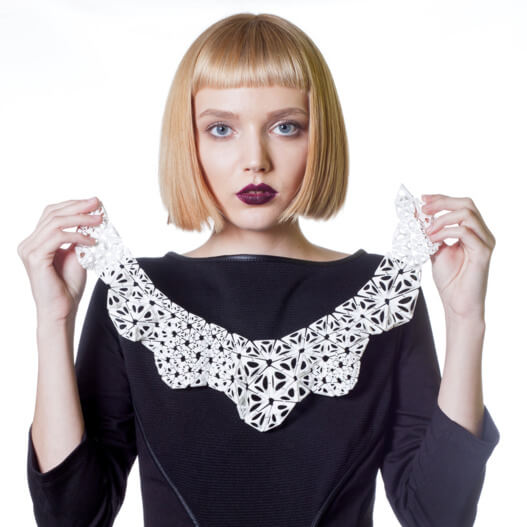There are many reasons to start producing 3D printed jewelry. What benefits can Additive Manufacturing bring to your business? What can this technology do that others can’t? Let’s find out!
#1 Unimagined freedom of design
We need to start with the fact that 3D printing works only thanks to 3D modeling. Without a 3D model, you can’t produce anything. And here comes the new design freedom you can reach thanks to 3D modeling. Basically, anything you can imagine can be designed on a computer and then brought to life, layer by layer.
Traditional technologies would struggle or even fail to produce complex geometries and great details on such a small scale, such as earrings. 3D printing gives you the freedom to design abstract shapes or interlocking structures. It can even give you the option to close one object inside another and produce them in parallel.
#2 Don’t worry about the weight
Some jewelry is problematic, as it is heavy, which makes it uncomfortable to wear and not practical. You can forget about that issue if you decide to use Additive Manufacturing technologies. There are many ways to reduce the weight of your 3D printed jewelry.
First of all, some materials are pretty lightweight as it is. Technologies such as SLS or Jet Fusion works with plastic powder, which already makes them much lighter than if you were using traditional manufacturing technologies.
Your 3D printed jewelry can also be filled with lattices. Bigger designs such as decorative ornaments, brooches, or necklaces don’t have to be solid inside. An interesting solution to lightweight 3D printed jewelry is lattice structures.
Last but not least, your parts can be hollowed. There are some 3D printing materials that may not allow it, but they’re also plenty of options to choose from where hollowing is allowed and even advised. Learn everything about hollowing with our guide.
#3 Reach a new level of quality
You might be one of those people who see 3D printing as a low-quality FDM 3D printer, where the layers are very visible. That’s old news. Professional 3D printing brings to the stage HD quality for your 3D printed jewelry.
Depending on the technology, Additive Manufacturing is capable of reaching layer thickness as little as 25 µm, which is 0.025 mm. For comparison, average hair thickness is 100 µm. New production techniques allow you to reach the ultimate quality, also at a low cost.
#4 Innovative 3D materials
Metal 3D printing can also be beneficial for you, you can produce your designs in precious metals such as Brass, Bronze, or Silver with different plating options. You can learn more about Metal 3D printing and Wax Casting with our free ultimate guide.
However, as we mentioned above, you can use even plastic for your 3D printed jewelry. Don’t limit yourself only to metals, there can be also other, innovative materials. One of our clients 3D printed bag ornaments for her collection with plastic technology SLS 3D printing, which then were finished in different colors.
Also worth mentioning are resins. Both plastic and resin for 3D printing are strong materials, robust and resistant to scratching. For instance, VeroWhite resin can give you 3D printed jewelry with a very smooth surface thanks to UV curing and is available in 12 colors. Other resins, such as EPU, are flexible and can be recommended for bracelets or watch straps.
#5 Manufacture 3D printed jewelry molds
If you decide Additive Manufacturing is not the right technology to produce your jewelry, it can still be a great asset to your design process. An interesting application of 3D printing is molds. Your production process can be improved thanks to 3D printing as it can provide you with a perfect master model to later be used for mold making.
Creating molds with the help of 3D printing is quite popular, read more about the advantages coming from 3D printed molds.


 Connect with Google
Connect with Google Connect with Facebook
Connect with Facebook




